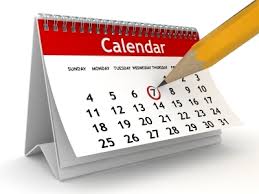With spring just around the corner, it is time to get serious and get the garden ready! The fickle weather of March makes it impossible to set dates and schedules for planting, so proceed with caution! Here are some timely plant and garden related tips from the University of Tennessee Institute of Agriculture:
Odds & Ends
- Now is a great time to remove weeds from your garden beds. Doing so now will make the plant beds look better and prevent them from going to seed; therefore, making fewer weeds next year.
- Clean out all of your birdhouses now, so that they will be ready when the birds return.
Shrubs & Trees
- You can prune summer flowering shrubs like Crepe Myrtle after the last extremely cold weather but before they leaf out significantly.
- Early March is still a good time to transplant shrubs, trees, and hardy vines.
- Climbing roses should not be pruned until after their first flush of growth. Now is a good time to tie the canes to a support before they flush out with spring growth..
- Prune winter Jasmine after flowering.
- Cut trumpet creeper vine back now in that it flowers on new growth and pruning will promote better flowering.
Perennials, Annuals & Bulbs
- March is when many summer blooming annuals should be sown indoors. Follow catalog or seed package directions.
- Seeds which were started indoors last month will most likely be ready to be transplanted into their finishing containers and given dilute fertilizer.
- Divide and transplant clumping perennials such as daylily and hosta and fertilize established ones as soon as new growth appears. Transplant any free seeding perennials such as hellebore or coreopsis as they appear.
- Cut-back ornamental grasses to just above their growing crown. Divide any thick and overgrown clumps and fertilize established grasses as soon as new growth appears.
- Plant tender bulbs and tubers (gladiola, lilies and dahlias). You may continue planting additional bulbs every two weeks until mid-June to ensure a continuous source of bloom.
- When night temps get above 40 degrees, feed your pansies with a water-soluble fertilizer such as 20-20-20..
Fruits & Veggies
- Evaluate your vegetable garden plans. Often a smaller garden with fewer weeds and insects will give you more produce.
- Finish pruning fruit trees this month – before the buds swell.
- You can still do dormant spraying of fruit trees – before the buds swell. Spraying should be done on a still day with the temperature above 40 degrees F.
- Remove straw mulch from strawberries at the first sign of growth.
- You can still plant strawberries, blueberries, currants, loganberries, boysenberries, grapes and fruit trees. .
- Take a little time to prepare the vegetable garden soil for planting. The addition of well-rotted manure, processed manure, peat moss or compost are good additives for building compost humus in the soil.
- For early March, its not too late to plant peas as well as perennial vegetables like asparagus, rhubarb, horseradish and artichokes.
- Broccoli, cabbage, Brussel sprouts, lettuce, chard, onions and potatoes should be planted this month.
- Aphids and caterpillars can be especially bad on early crops so watch and treat as they appear.
House Plants
- House plants will react to longer days and brighter light at this time by putting out new growth. March is a good time to pinch them back to generate new growth and to thicken their growth. You can then begin fertilizing again with a dilute solution of soluble house plant food.


